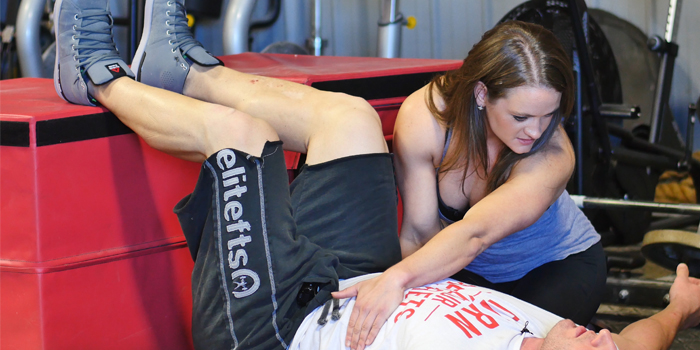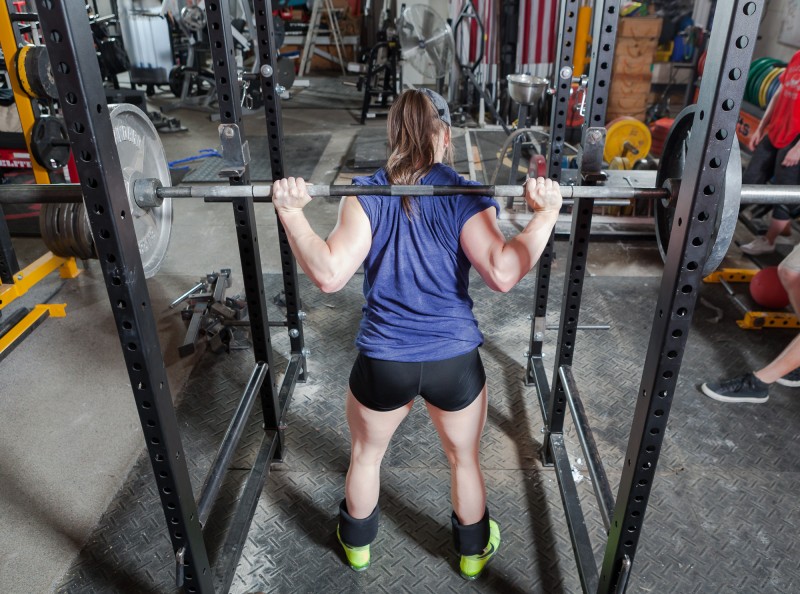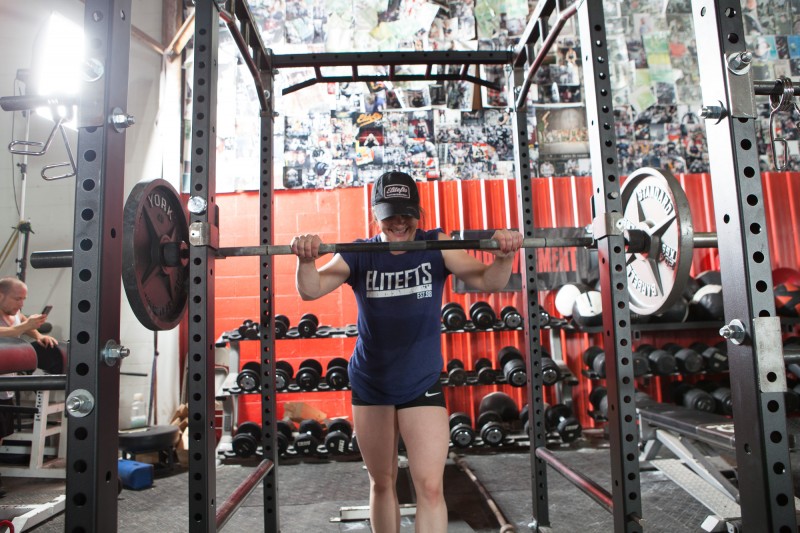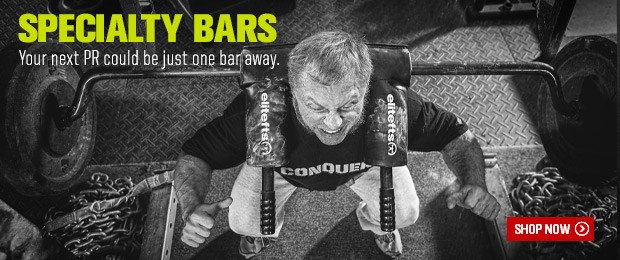
The other day I saw an Instagram post from a physical therapist (PT) who has, quite frankly, changed our field, and I couldn’t be more grateful for it. Mitch Babcock posts a lot of his training videos on his Instagram. This post was as follows:
Public Service Announcement
There are many people out there lending advice to training and fitness. I see more and more clinicians (physios, chiros, docs) making bolder and bolder claims in their posts. Having knowledge is important. Having understanding is an entirely different beast. If you're serious about your training, be sure you're getting your 'advice'—dos, don'ts, corrections, etc.—from someone who's ACTUALLY training. You can read all the cookbooks you want; I'm not taking cooking advice from you until you've spent some time in the kitchen and applied that knowledge. That is why you will find me posting videos of my own training. I want you to know I'm in the grind every day along side of you. I share tools I've tested and truly believe can help.
If you don’t already, go follow him. You will learn loads.
I spend just as much time training as I do working as a physical therapist. My training is a testing ground, and a place for me to learn and gather data. If you’ve seen me lift, ever, you know that I have a lot of changes to make and constant refining ahead. No one really taught me technique (if a squat was to depth, it was good; if a deadlift was locked out, it counted), and now, at a high level of strength, I’m having to modify just about everything. That learning process is invaluable in the insight it grants, especially when combined with the knowledge of functional anatomy and the nervous system. It is practical lab work every single day.
RECENT: Applications and Benefits of Tempo Training
As a cook in the kitchen, I’m feeling like a lot of people do after a few weeks of progressively heavier weight: beat up and just a little “off.”
No pressure, but I’ve also got about five days to get it figured out, as that will be my first meet back since Boss of Bosses 3, which was a disappointing meet from a performance standpoint. I’m itching for a decent total, but also have a different approach mentally as I feel I have come a long way as both a PT and athlete in that time.

Over the years, I’ve worked with a lot of athletes as both a coach and PT, and it seems everyone has something different they like to do throughout their deload week, which I’m approaching a little differently after reflecting on what I’ve learned watching myself and those I train with. I think generally we approach this week with the mindset of “rest, sleep, nothing more." I’m challenging that a bit and using this week as an opportunity to fully prime myself to peak meet day based on the last six to eight weeks of the training cycle.
I attribute my progression and performance largely to how much I nerd out over things that I’m hyperaware of based on mechanics and my PT knowledge. I am not one of those genetically gifted, talented lifters, and what has permitted me to progress is how attuned I tend to be to all the small variables. I keep a running barometer of a few indicators that tell me how my neuromuscular system is doing.
The first thing to talk to me is my squat technique. I know when it’s on, and it’s a pretty good indicator that most other things are where they need to be from a neuromuscular perspective. When it goes, there are usually half a dozen things that follow.
I’m about a week out, and my squat technique feels like absolute garbage. By the time I took my heaviest squat roughly three weeks out, I felt like I had a bear of a time actually getting my air and bracing correctly. Watching the video, I look shaky, off, and like I have zero planting or awareness of where I am in space. That session alone, I felt I lost 10 to 15 pounds off the bar, which meant even more at the third attempt. Looking at where I was projected prior to this session, I was pretty disappointed, so I knew I needed to address whatever was contributing to decreased bracing strategy. I can pick out loads of things to fix with this video, but the biggest issue I see is stability. Look at my feet and overall levels of grounded-ness. I am literally all over the place, without any sort of reference center to ground myself on.
I think there are a few things that have contributed to that. As training intensity increased, and as certain accessories were rotated in and out, I noticed dominant groups ramp up, which effectively decreased the ability to utilize what I needed to. There’s a lot of debate over the word “inhibition” so I’m not going to go there (yet), but I will say that as I felt tone levels increase in certain areas, it became more difficult to find and feel what I need to when I am moving at my best.
What I noticed: as I lose my bracing technique, faulty patterns develop. Duh. I’m weaker in these patterns. No surprise. My biggest influence on pattern and position, and therefore power (position equals power), is the ability to brace well. All technical cues aside, I literally could not brace, which sounds stupid if you haven’t felt the difference between solid and not-so-great. You know this already; it’s a lot easier to jump off the floor than it is to jump off an unstable inflatable raft sitting in a pool. The more stable the base, the better the output.
I know that when my bracing locks in I get more glute, more pop out of the hole in my squat, and less energy leakage. It all gets put into the bar. My initial deadlift start position is easier to find and maintain, which keeps me strong through lockout. My stability is an issue when I bench. Bracing and the ability to stabilize the rib cage, and therefore shoulder blades since they sit on top of it, maintain my lines where I’m strongest.
More than just maintaining correct bracing for power production, the neurological need for perceived stability is what permits or prohibits movement throughout a given range. As you approach near-end range, the ability to stabilize the particular joint or region is largely what lets the nervous system permit you to access that range. For a lot of women, including myself, when we load heavy weight and our nervous system detects a flaw in our ability to stabilize that weight, we go into a lumbar-locked pattern. This looks like someone that tends to overextend either right as they break their hips or as they approach the hole. Although this pattern may increase perceived stability because of reliance on structures rather than intra-abdominal support provided by both the respiratory and pelvic floors (we talk about one a lot more than the other), on meet day it can cause issues with depth, as our hips can pop up rather than staying underneath us. Stability can influence technical outcomes. I could feel myself falling into this the last few weeks of training especially. This is a symptom of the same cause I already know I need to address.
One potential contributing factor this training cycle compared to others: I love the SS Yoke Bar, but I probably integrated it at too high an intensity. As much as the squats “went well” in that I completed sets and reps at the prescribed intensity and everything looked okay from the camera angle, it probably was too high intensity. There was a mismatch between my ability to maintain core bracing and upper back strength, and my result was increased tightness or tone levels in my neck, pecs, and lats, secondary to decreased diaphragmatic function. I noticed that I’d re-rack and be notably out of breath after using it — not in the aerobic or conditioning sense, but it felt like I was continually gasping for air. It felt like I couldn’t actually pull air “in” but not short of breath, which I’d feel on a smaller scale day to day. This is useful information to have for me, as everyone’s breakdown is different, and this likely is not the case for everyone. If any of you follow David LaMartina you’ll see he’s been using a lot of SS Yoke Bar as well, and he and I both noticed the same thing: somehow after re-racking, he’d be gasping for air trying to fill his chest with his neck and every other accessory respirator he could find, which significantly affected his bench and recurrent elbow pain the next day. This at least gives me a sample size of n = 2 with one particular variable.
As much as I hate to pick just one thing that fixes “everything,” when you’re a week out, fatigued, and feeling beat up, you don’t have the luxury of fixing 12 things. You need one thing, maybe two; you can focus on for maximizing performance over the next few days.
I mentioned I have a few data points and barometer readings I keep an eye on over the course of months and probably have an increased sensitivity since I’m constantly evaluating. Knowing what you’re looking for, and what you’re looking at, changes the picture of the body completely.
For this “deload” week, I need to get it together so my platform performance, as best as can be managed, actually reflects my training.

Needs Analysis
- Decreased reliance on neck, pecs, and lats for breathing (I found myself oddly but mildly out of breath just treating patients and talking during the day — not from a cardiovascular standpoint, but because I felt I just couldn’t get air)
- Improved core and bracing strategies
- Decreased reliance on low back for support (secondary to improved bracing)
- Glute reintegration with proper bracing
What it felt like under the bar
- Inability to get air or “open up," even on the unrack
- Difficulty keeping hips underneath me and preventing energy leakage while squatting
- Difficulty keeping tight throughout midrange in my pull, contributing to loss of position and poor lockout strength or soft lockouts
- Cranky low back and neck immediately after sessions
You can see how some of these things start to build on each other. Coming back to the raft analogy used earlier, the more laxity I have throughout my midsection, the more my body is like that pool raft rather than a firm floor to spring off. If my obliques, diaphragm, and pelvic floor aren’t all working together in conjunction with smaller stabilizers (depending who you talk to and which research you read, this is debated. Honestly, I don’t care. When I have a goal of 360 pounds on my back, I need things to work, period), there’s less ability to create a stable base for everything else to be anchored to. If I’m chained up treating patients, a low threshold activity, I doubt it’s going to magically start working when I increase demand on the system. Chances are I’m going to keep hanging on to everything but my feet on the floor and my core to keep me upright.
Return to the video posted earlier and you’ll see what I mean.
The Plan
Improve rib cage mobility and patterns to permit mechanical advantage, improve core stability to decrease reliance on the low back, and improve core bracing strategy to improve the stability of the surface my glutes are anchored to.
How
90-90 Hip Lift
This will be done with hamstrings engaged, breathing diaphragmatically without the balloon. I’m a weirdo and talk and care a lot about the rib cage, because it tells me tons about the ability to brace. Generally speaking, if the ribs are popped up or flared up, it tells me your obliques and diaphragm are significantly disadvantaged mechanically. In the past I’ve used a balloon to help engage my deep core, get my ribs down, and give my obliques the mechanical advantage they need to stabilize things. This go around, however, I was so “chained up” that increasing resistance actually only made the issue worse. There is a time and a place to implement things. I mention this because I am suddenly seeing lots of lifters on Instagram trying to incorporate this. There is such a thing as appropriate application and not everyone will benefit from this. Seeing someone do it does not mean it is right for you or that your "core” even has a clue how to function in that environment. Rant aside, I kept it simple because I know that when I’m actually consistent with this basic exercise I feel about 600 times better under the bar. I will likely progress this mid-week, but at this point, I know my body is a fantastic cheater, and I’ve got five days. I don’t have time to mess around. Give me the simple and effective.
Variations of the Pallof Press
I need simple, staple exercises because they work when you do them well. When I say well, I mean intentional about keeping the same hip and pelvis position you’re actually trying to drive. Once I got my ribcage and pelvis in the position I want them in for my squat and pull, I needed to work on generating what John Rusin has turned me onto in driving internal tension. This doesn’t require a significant amount of weight, at all; this is intentionality in stabilizing your core. You can do them on a cable machine or with bands. I’ll start these in half-kneeling, then progress to tall-kneeling, and likely progress to more challenging variations such as tall-kneeling overhead, or positions that make it difficult to maintain neutral hips/pelvis without extending. Basics done well should do the trick in most circumstances.
Banded RNT Overhead Squats
These can be done with a band or cable machine and rope attachments. Generally, it’s a little tougher to maintain concurrent upper back tightness while simultaneously driving good rib cage/pelvis position (which is essentially your brace) as I descend into a squat. I had to go slow through the motion, being mindful of my position, my bracing and tightness, and my hip/pelvis position, because those are my big indicators. There are plenty of ways you can accomplish position and reintegration, but this happens to be one of mine based on my particular squat pattern.
Simple Glute Exercises
We’re talking as basic as a well-educated glute bridge or frog pumps, mostly to improve proprioception of the glutes and overall awareness. These can progress throughout the week to various single-leg exercises with an emphasis on carryover of specifics to my squat including:
- Torso angle
- Hip and knee position
- What’s working and when in the squat
- Where I actually want my weight distributed on my foot rather than where it is
These are simple things, done well, that give me a structured plan to follow for a few days. I have a few objective tests I’ll run on myself mid-week, and depending on what I feel and how I test, I’ll change and modify as needed just like I do during a volume phase.
There is nothing really new and groundbreaking here, but hopefully gives insight on how you can go about starting your deload, things you can be looking for during your training cycle, and hopefully ways you can think about your own training going forward. My body is specific to me obviously, but I’m a big believer that learning how another person thinks is one of the best ways you can learn how to think for yourself.
Here’s to hopefully hitting that 1000-pound total in sleeves I’ve been after for a hot minute (and not filming videos on a water load ever again).











"a lumbar-locked pattern... looks like someone that tends to overextend either right as they break their hips or as they approach the hole. Although this pattern may increase perceived stability because of reliance on structures rather than intra-abdominal support... on meet day it can cause issues with depth"
A very 'solid' no extra moving parts squat that was high, alternately a squat at depth that was pretty wobbly with anterior pelvic tilt happening at the hole.
From your article first revisited PRI warmups that had helped in the past. Next, spent more time going through the Kabuki (KMS) progressions of breathing, bracing, and rooting. Lastly, used cues to bring ribs down and pelvis up when loading the squat. It's a work in progress, breathing is definitely helping with a fix!